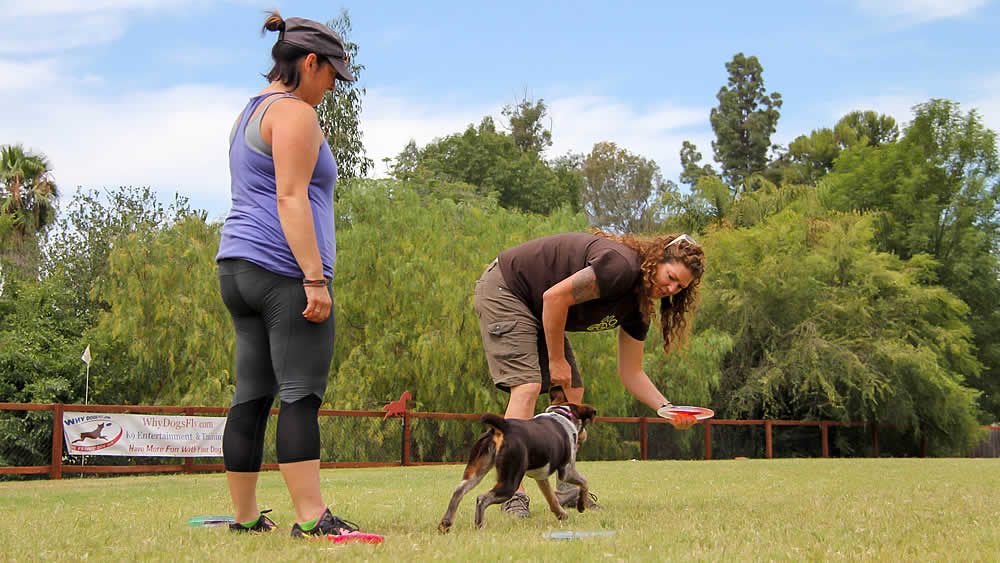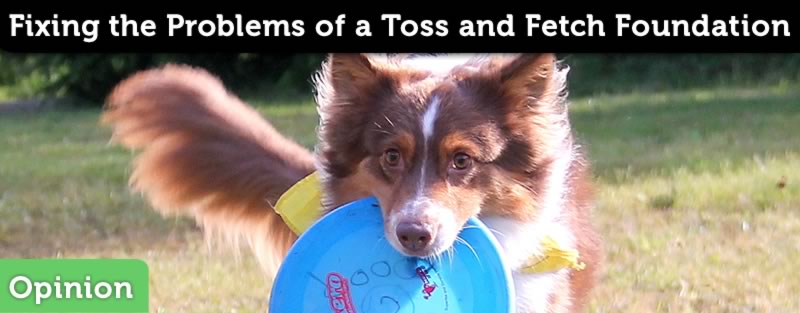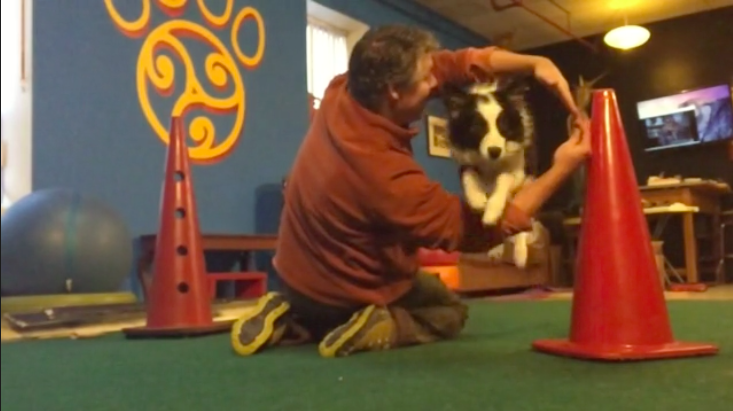
Epic Learning Hoop – Tricks to the Trick
Trick to the Trick: Prompt Switch
The prompt switch is a technique used for changing a cue from one signal to another. To employ a prompt switch, the handler simply puts the new or weak cue in front of the strong or established cue.
To change the verbal cue for the sit behavior from “Sit” to “Broccoli” with a prompt switch, the handler simply gives the new cue, “Broccoli”, followed by the old cue, “Sit” — mark the sit behavior and give the dog a cookie.
Do this a bunch of times and then withhold the strong cue. “Broccoli,” and wait – the dog will remember the sit cue followed and the cookie followed that… “Perhaps I ought to sit.” Dog sits and earns the cookie.
This prompt switch technique is great for changing cues, but beyond that is a powerful tool for dog training.
A Cookie is a Strong Cue
The key to making this skill work so efficiently is the purposeful use of a prompt switch.
The presentation of the arm is the weak cue, the tossing of the cookie is the strong cue.
“Huh? The cookie can be a cue?”
Does it trigger the behavior?
Once you understand that a cookie can be a cue or a signal to the dog, the prompt switch in the video is totally evident.
Prompt Switching the Over
By popping the arm out then tossing a cookie, and doing this purposefully and methodically, the handler tells the dog, very clearly, that the arm position is attached to the tossing of, and subsequent eating of, a cookie.
The dog will start to respond on the presentation of the arm, as Epic did in the video. Once the dog is offering the skill with the presentation of the arm, withhold the strong cue and let him fill in the gaps to make a cookie happen. It’s worth a try, right?
I stopped using the strong cue, the tossing of the cookie, at 0:25 seconds in the video. At this point in time the presentation of the arm became Epic’s cue to leap. There were a few moments of confusion when the cookie was not readily available, but purposeful reward placement solves that rather quickly.
Reward Placement
Like all dogs, Epic puts his face where the cookie happens. Throughout this session there was very purposeful use of Reward PlacementThe dog puts his face where the Cookie or the disc happens. Where you put the reward matters. Reward Placement is huge in disc dog freestyle. Your dog’s face will always wind up... More. On the skill, the cookie is tossed to create a need to go over the arm. After the over, a cookie is tossed to put the dog in position for the next attempt.
Your dog goes where the cookie happens. Your dog returns to you from where the cookie happens. Give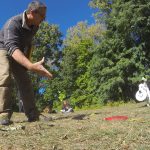 The Give is a retrieve to the hand. A cued Give is a foundational skill that is not super useful in the actual performance of disc dog freestyle, and has huge applications for... More your self some time and space by tossing cookies. Put your dog in line to the back side over or hoop with a sharply offered cookie in the hand.
The Give is a retrieve to the hand. A cued Give is a foundational skill that is not super useful in the actual performance of disc dog freestyle, and has huge applications for... More your self some time and space by tossing cookies. Put your dog in line to the back side over or hoop with a sharply offered cookie in the hand.
Don’t be afraid — toss those cookies around.
Back Side Prompt Switch
Once the back side position is worked out, not always a simple task, prompt switch the presentation of the arm with the presentation and/or tossing of the cookie. It is much easier to work a hand signal from this side, so tossing a cookie might not be necessary to elicit the behavior.
You want to toss the cookie after the back side to create an approach for the next repetition. Toss it out there four to ten feet and there will be plenty of time to offer the arm for another round of overs.
Prompt Switching the Hoop
The first repetition of the actual hoop on the video (1:47) was probably the best illustration of the proper prompt switch for the Hoop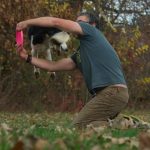 A Hoop is an Over or Vault that travels through a hoop made from your arms or body. A Hoop expresses great teamwork and connection between dog and handler. Most Hoops are done... More. The static upper arm with the sharp presentation of the arm is the same cue as the earlier repetitions. That should have a reward history before moving on to the full presentation of the Hoop which I employed in the next few reps.
A Hoop is an Over or Vault that travels through a hoop made from your arms or body. A Hoop expresses great teamwork and connection between dog and handler. Most Hoops are done... More. The static upper arm with the sharp presentation of the arm is the same cue as the earlier repetitions. That should have a reward history before moving on to the full presentation of the Hoop which I employed in the next few reps.
Once the dog is comfortable with the hand being above, you can start to offer the full hoop as the cue.
By this time, the presentation of the backside hoop ought to elicit the leap. If not, prompt switch it.





